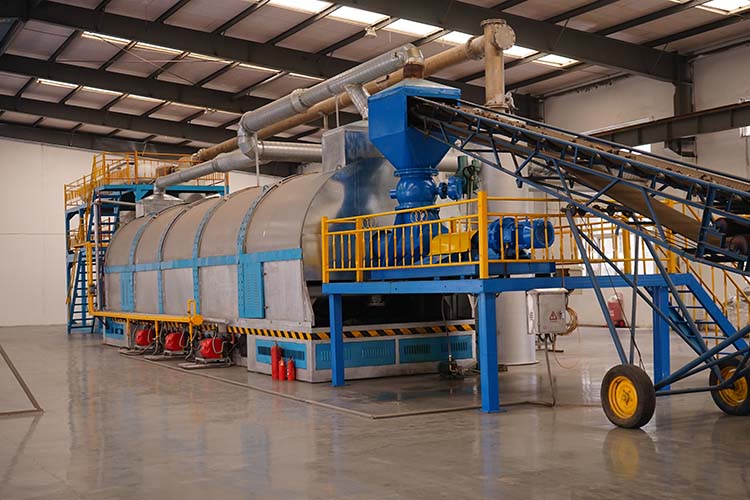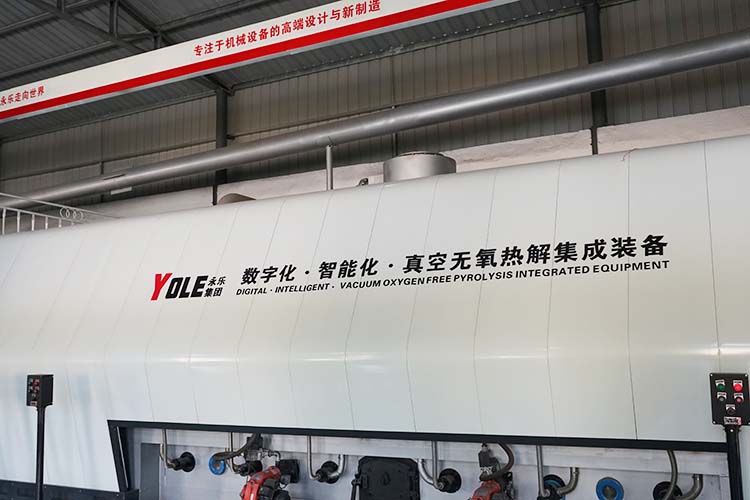A high-temperature pyrolysis incinerator is a device used for treating organic waste. Through pyrolysis reactions under high-temperature conditions, it converts waste into renewable energy or other valuable chemical products. This technology has broad application prospects in organic waste treatment, effectively reducing the negative environmental impact of waste while enabling resource recycling.

In a high-temperature pyrolysis incinerator, organic waste is placed in a reaction chamber and thermally decomposed in an oxygen-deficient or low-oxygen environment. This process avoids complete combustion, thereby reducing the generation of harmful gases. The pyrolysis reaction typically consists of several stages, including drying, pyrolysis, and carbonization. During the drying stage, moisture in the waste evaporates; in the pyrolysis stage, organic matter decomposes into combustible gases, liquid oils, and solid residues under high temperatures; finally, in the carbonization stage, the remaining solid material is further converted into stable carbonaceous material. These products can be further processed or directly utilized as needed.
High-temperature pyrolysis incinerators have a wide range of applications and are suitable for treating various types of organic waste, such as agricultural residues, forestry byproducts, municipal organic waste, and industrial organic waste. Through pyrolysis technology, these wastes can be converted into combustible gases for power generation or heating, liquid oils for fuel or chemical feedstocks, and solid residues for soil improvement or as adsorbent materials. This versatility makes high-temperature pyrolysis incinerators highly valuable in the field of waste resource recovery.

The advantages of high-temperature pyrolysis incinerators are mainly reflected in the following aspects. First, they effectively reduce the volume and weight of waste, alleviating the environmental pressure associated with landfilling or incineration. Second, the pyrolysis process generates fewer harmful substances, significantly reducing the production of pollutants such as dioxins compared to traditional incineration methods. Additionally, pyrolysis technology converts waste into energy or chemical products, enabling resource reuse and aligning with sustainable development principles. The equipment also exhibits high operational stability and can adapt to the treatment needs of various types and compositions of organic waste.
When designing and operating high-temperature pyrolysis incinerators, factors such as temperature control, reaction time, and waste characteristics must be carefully considered to ensure the efficiency and safety of the pyrolysis process. The selection of materials for the equipment is also critical, as they must withstand high temperatures and corrosive environments. By optimizing process parameters and equipment structure, pyrolysis efficiency and product quality can be further improved.

As an environmentally friendly technology, high-temperature pyrolysis incinerators provide a viable solution for organic waste treatment. They not only help reduce environmental pollution but also promote resource recycling, offering significant social and economic benefits. With continuous technological advancements, high-temperature pyrolysis incinerators are expected to play an increasingly important role in more fields, contributing to sustainable development.
Yongle Environmental Protection is mainly engaged in the research and development, production and sales of complete sets of technical equipment for organic solid waste disposal and comprehensive utilization. Production and manufacturing, domestic waste treatment equipment, tire pyrolysis equipment, medical waste disposal equipment, hazardous waste disposal equipment, and achieve efficient and comprehensive utilization of resources through independently developed low-temperature anaerobic pyrolysis equipment technology solutions.
Tags:Analysis of Resource Utilization in High-Temperature Pyrolysis Incineration Furnaces,High-temperature pyrolysis equipment,YONGLE GROUP
 Latest news
Latest news


























